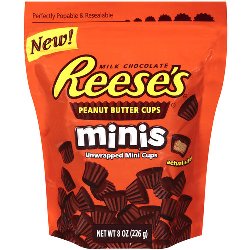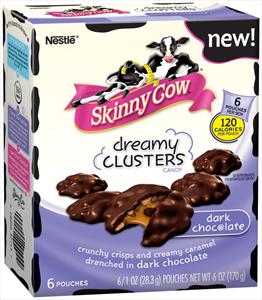You’ve all heard the clichés regarding innovation: “Thinking out of the box,” “New products are the lifeblood of a company,” “Better to ask for forgiveness than permission,” and one of my favorites, “Unless you’re the lead dog, the view never changes.”

|
| Bernie Pacyniak |
But, hey, what does it take to be really innovative? Or is it true that we’re all just copying what’s been done before, simply tweaking and twisting concepts in a 21st century way.
Perhaps it’s time to revisit what innovation means as it relates to product development since new products are,if not the lifeblood,certainly a catalyst for sales growth.
The folks at the Nielsen Co. recently published their views on “Breakthrough Innovation” as it applies to consumer packaged goods (CPG) companies. Naturally, within its list of 14 Breakthrough Innovation Winners were two candy companies: Nestle’s Skinny Cow launch and The Hershey Co’s debut of Reese’s Minis.
According to Nielsen, it evaluated more than 3,400 consumer products launched in 2011. Taking the notion that innovation is more of a discipline than an art, the company determined that there were three core disciplines critical to attaining demand-driven innovation: Demand-driven insight; demand-driven development and pervasive leadership.
Within that context, Nielsen established three criteria that qualified products as potential breakthrough innovations: distinctiveness, relevance and endurance. To be distinct, the new product had to “deliver a new value proposition” — reformulations, repackaging, size changes, repositioning and other minor changes didn’t cut it.
With regards to relevance, the product had to “generate a minimum of $50 million in year-one U.S. sales. OK, I understand that eliminates nearly 98 percent of my audience, but bear with me on this. After all, just because you’re not in that league, doesn’t mean you can’t pick something up from the big boys.
And the third criteria was probably the killer — achieve at least 90 percent of year one sales the second year. Everyone knows repeat sales after trial are crucial to having a successful new product launch. Replicating first year numbers the second year definitely stamps a new product launch as a winner.
The report than drills down into the three key disciplines, providing some really valuable insights about each and every discipline. For example, within the demand-driven insight, it’s not always easy to identify unmet demand.
As the Nielsen report points out, if Henry Ford had asked what people wanted as a means of improving transportation, they would have said faster horses. Moreover, as the treatise on innovation states, “Searching for opportunity by exploring the landscape of latent demand is no simple task. It’s a voyage of negative discovery: searching for what’s missing and imperfect in consumers’ lives.”
And that clearly is what led Hershey in its development of Reese’s Minis. In its spotlight on how Hershey came to developing the product item, Nielsen reports that then Senior Marketing Director Mike DePanfilis acknowledged that the brand’s record on innovation was lacking at best.
In talking to consumers through 24 focus groups, DePanfilis and his team discovered an opportunity; namely, that the current Reese’s product “provided an inadequate solution to major usage occasions — notably, in the car and at work. Unwrapping was a hassle, eating was messy and the paper liners created a guilt-inducing tally of consumption.”
Enter “hand-to-mouth” consumption and the launch of Reese’s Minis. Actually, it took quite a bit of work to replicate the Reese’s Pieces experience in a Mini as DePanfilis details in Nielsen’s report. That’s where the discipline and “pervasive leadership” comes in.
As for Nestle’s Skinny Cow launch, Nielsen describes the difficulty involved with transferring a well-know brand into an entirely different category, that is from the ice cream aisle to the candy section. 
Again, the goal was to satisfy an unmet need, specifically, “consumers looking for assistance in living healthier lives without undesirable sacrifices, inconvenience or cost.”
Nestle’s R&D embraced the challenge of “…making sure that shoppers literally fall over our product.” They also saw the need to expand the product’s presence beyond the candy aisle and into areas where Skinny Cow consumers are likely to shop, such as the Lean Cuisine section of the freezer bank.
Recognizing the loyalty and love Skinny Cow consumers exhibited, the marketing team orchestrated a social media blitz involving coupons for free trial boxes and e-coupons for sharing with friends. This, in turn, “created buzz and demand for the product before it even hit the stores.”
Again, I recognize that these multinationals have the resources small and midsized companies don’t have. Still, multinationals don’t have a lock on insight or innovation. Introducing discipline into the innovation process can work for large and small confectionery companies. And, as these product launches reveal, it doesn’t squelch creativity in the least.

